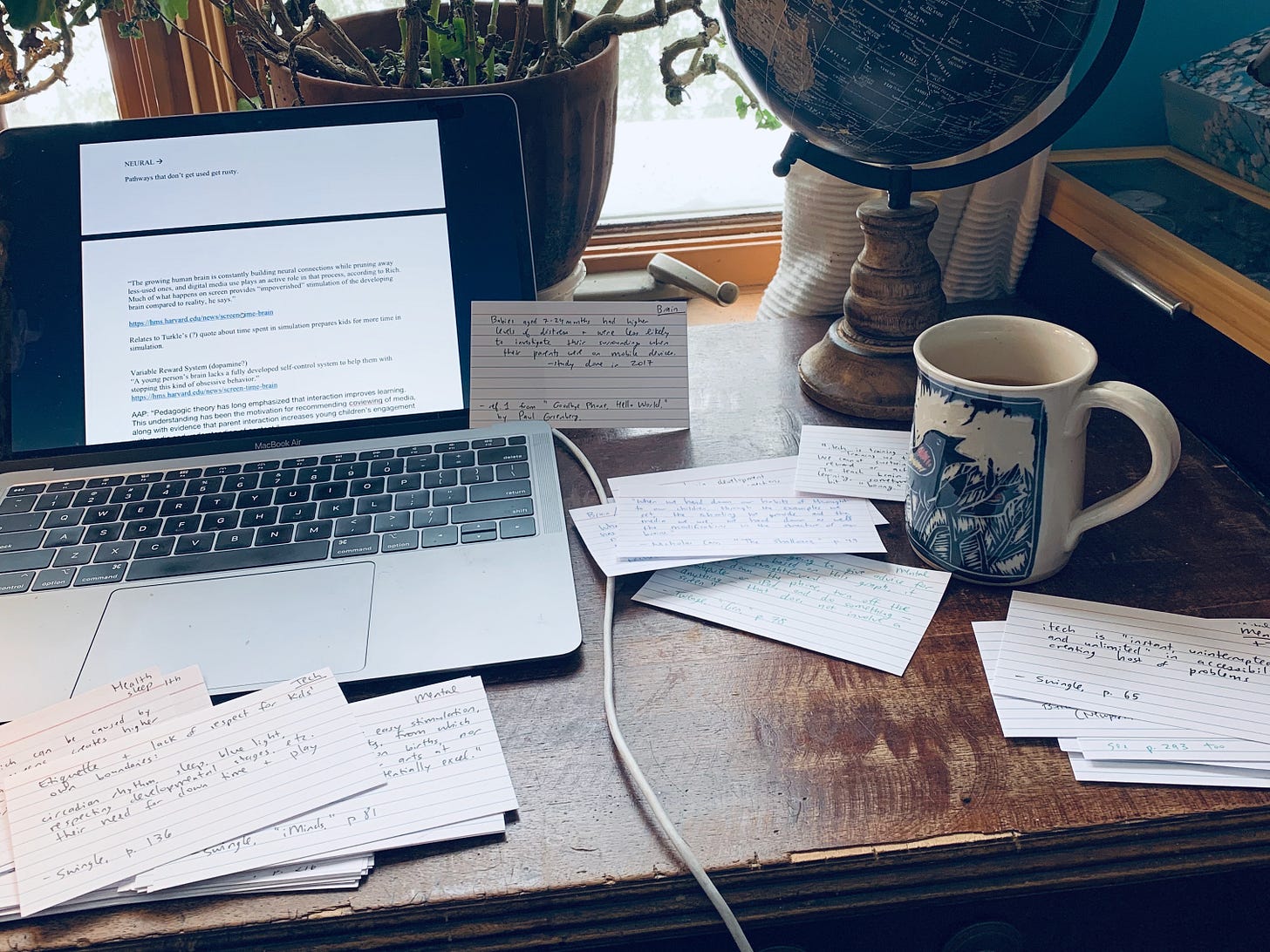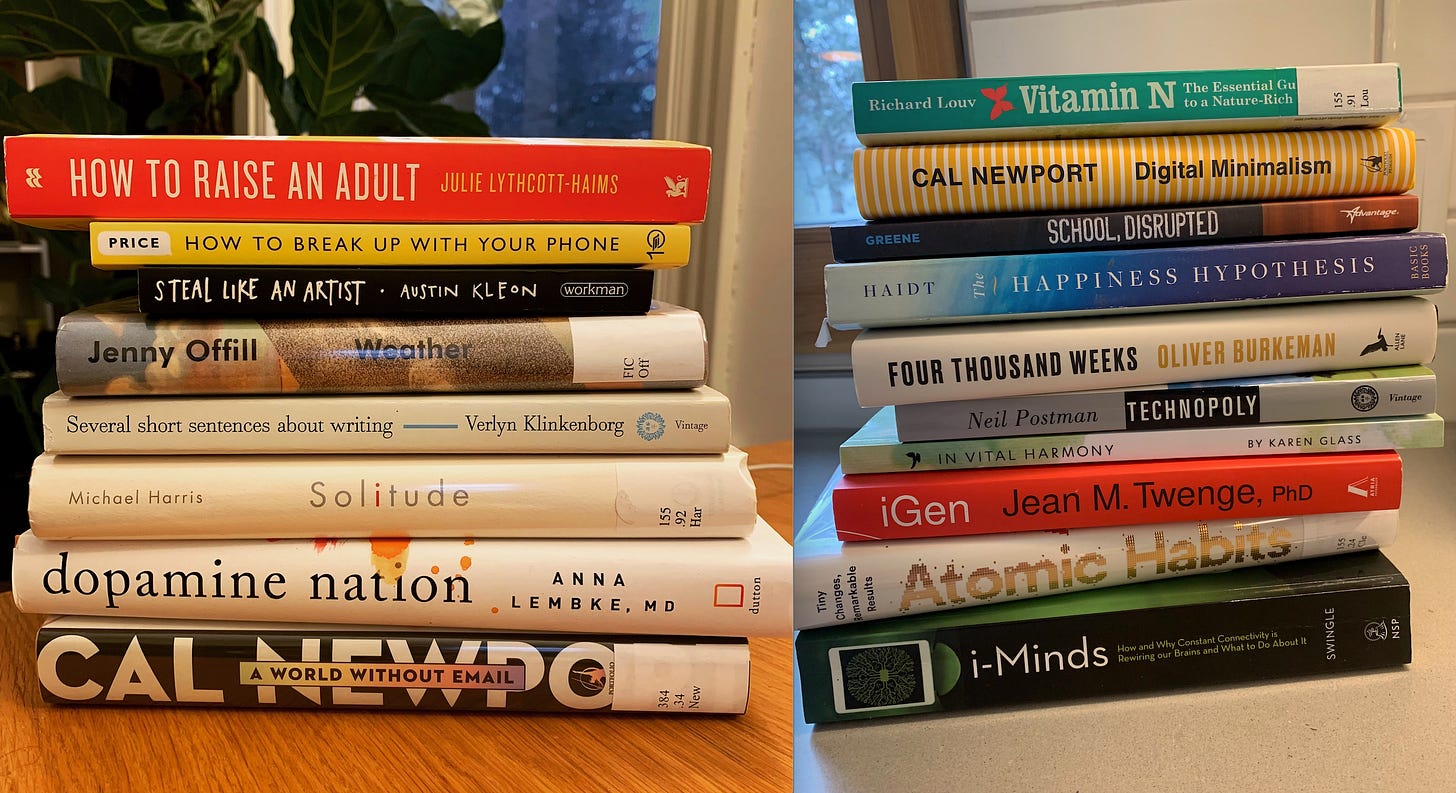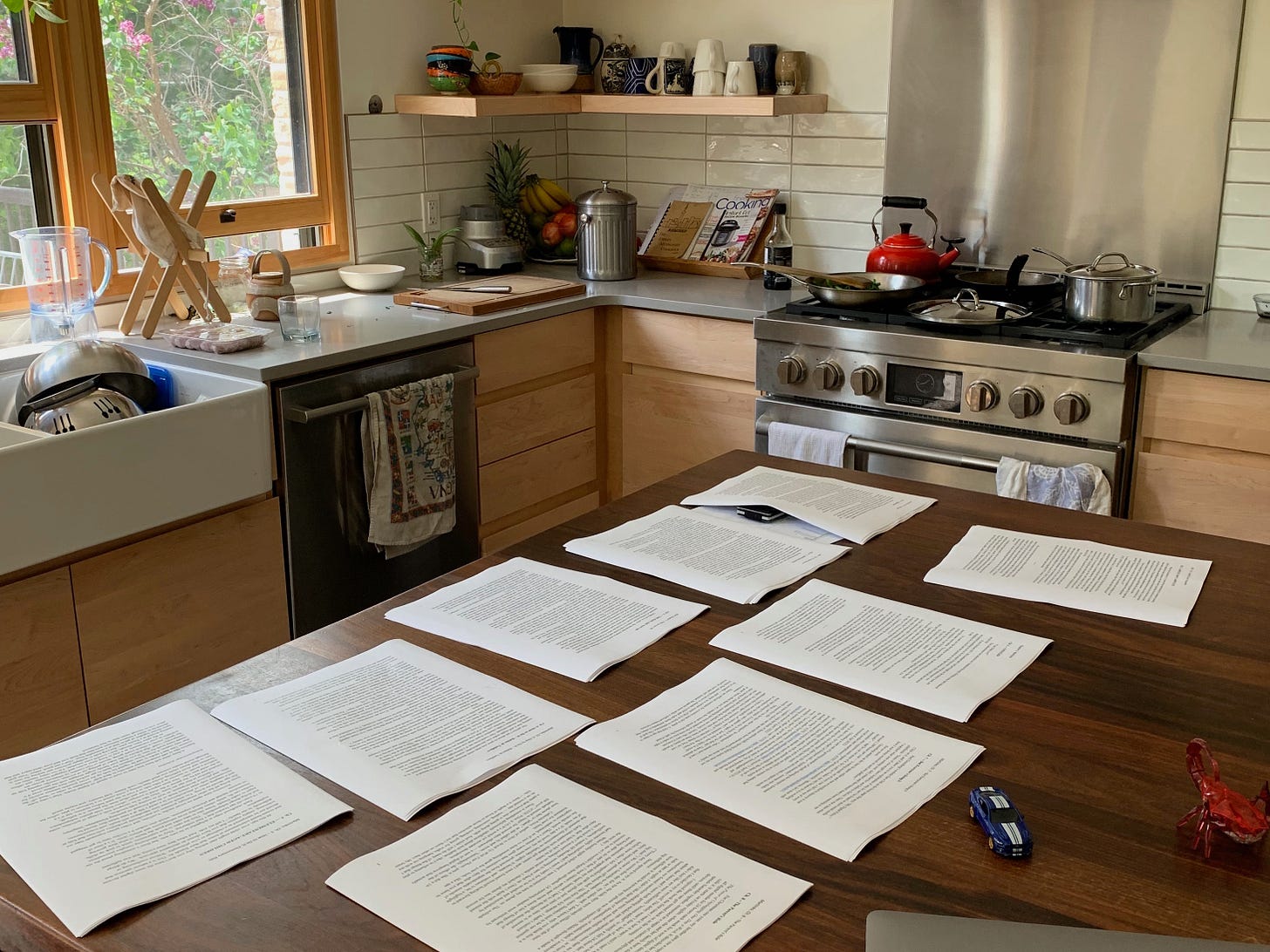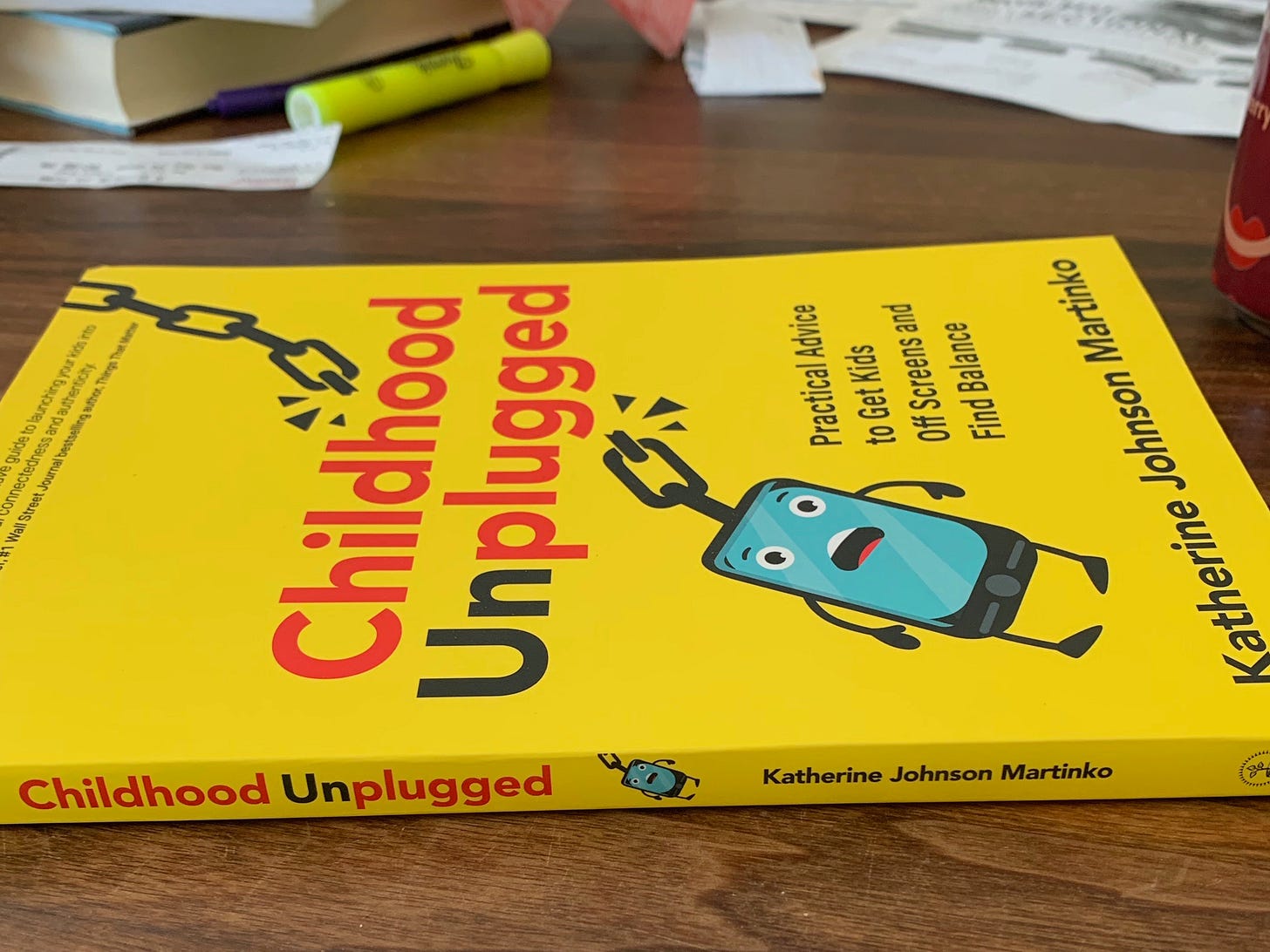How to Write a Book
Many long hours of solitude.
Last week, my 8-year-old son was unloading the dishwasher when he asked, out of the blue, “How do you write a book?”
I made some flippant comment along the lines of, “Years and years of stubborn persistence and hard work.”
But he wasn’t satisfied. “My friend at school wrote a story and now he wants to publish it. I told him you’re a writer and you could tell him what to do.”
I couldn’t resist laughing, even though his question was utterly logical. I told him his friend’s story sounds great, but that he should practice writing for a few more years before pursuing publication.
It got me thinking, though, about the whole process of creating a book, especially because tomorrow marks the official publication date for my new book, Childhood Unplugged. I went from knowing absolutely nothing about book publishing two years ago to having one come out tomorrow. And while I still don’t understand the process well, I have learned a few things along the way.
The Proposal
When I decided to write a book, I spoke to other published authors and asked about their experiences. They were willing to chat, and one even graciously sent me the proposal for his recently published book that I was able to use as a template. That was an eye-opening experience, forcing me to spend a lot of time thinking deeply about what I wanted to say, how it would be structured, why I felt qualified to write it, who I would interview, who the target audience would be, what other similar books existed on the market, what the writing style would be, and more. It was a valuable exercise that made the actual writing much easier down the road.
The Research
Once my proposal was accepted and the contract signed, I threw myself into research. I used a note-taking method that Ryan Holiday describes, reading books with sticky notes and pencils, and then transferring important information to index cards for filing into various categories. It’s very time-consuming and analog, but I think that is a crucial part of the process. It allowed me to absorb the information I was keeping and made it easier to recall things when I wanted them. It let me sort physical index cards into chapter and subheadings. I don’t think typing those notes or saving them digitally would’ve worked as well for me.
I read and reread books aggressively, dedicating two hours to undistracted reading time every morning last January. And I made tremendous progress, logging 12 major works of non-fiction that month alone, all of which were valuable resources in my writing.
The Writing
The publisher and I had settled on the end of the summer 2022 as the deadline for the first draft. Privately, I set a deadline of June, since I wanted it done before the start of summer vacation; that way, I’d be less stressed with my kids and able to give the manuscript to two personal friends to edit and give me feedback.
So, I began writing in February. Using the outline I’d submitted to the publisher, I tackled each chapter one by one, brainstorming key points and examples in a notebook and taking long walks along the frigid banks of Lake Huron when I needed to collect my thoughts. I laid out index cards on the floor of my office to map each chapter’s progress. And one I had the whole chapter roughly outlined, then I started writing. It didn’t take me very long, no more than 2 weeks per chapter. Then I moved on to the next.
Some chapters were easier to write than others. Some were more practical (the tips for cutting down on screen time), others more philosophical (the “amplify, don’t amputate” idea that I put forth). The latter was definitely harder to write, requiring deeper focus and thought. I spent a lot of time in silence during those weeks.
The Editing
I finished well ahead of the deadline because I am generally not a procrastinator and, to be honest, I felt highly motivated by this project. It was my baby, a dream come true, an opportunity that had been given to me that I did not want to fail. (As my brother told me casually, “Don’t mess this up.” Yeah, no pressure.)
Two editors looked at it over the summer and came back with minor edits. Meanwhile, I continued to read and research and add material to flesh out chapters further. It was during this time that I read Johann Hari’s Stolen Focus, and it blew my mind, providing a wealth of new inspiration for my book.
By the end of summer, I submitted the manuscript to the publisher and it came back with positive reviews. Together, we made minor adjustments until the end of October, the final deadline for revisions.
The Waiting
I knew that, from the time of final submission, it would be roughly nine months. I’d been forewarned, but it felt impossibly long. There was an in-house copy editor who tackled the manuscript. Then we chose the cover. I opted for bright yellow because I liked how bold and eye-catching it was. There was layout work, with fonts and headers and page breaks to discuss. I gave it another read-through to catch any lingering typos.
I reached out to endorsers to ask if they’d be willing to read an advance copy of the manuscript and offer comments in support. This felt like the book’s first big test in the real world—and it passed with flying colours, thankfully.
I also got to record the audiobook version of the book—a fun experience you can read about here.
The Marketing
Eventually I was paired with a publicist to help promote the book. I quickly realized the work was far from over! A big part of publicity is getting my name and book title in front of people’s eyes, mainly through articles, blog posts, interviews, podcast and radio appearances, film clips, etc.
It quickly became my job to write materials for pitches to various media outlets, to draft presentations, and to do interviews. It’s time-consuming, and sometimes the contributions go nowhere, but other times they take off and doing superbly, and that is profoundly satisfying (like this op-ed in the Toronto Star and a series of interviews on CBC Radio).
Publication
And now, as of tomorrow, the book will be out in the world. It’s exciting and scary at the same time. It reminds me a lot of having a baby, where this thing you love fiercely simmers and grows for a long time, and then you have to release it into the world, where it may be loved or hated, but it doesn’t really matter because it’s your baby and you’ve given it all you’ve got.
Now, looking back, it kind of feels like I just got the ball rolling and was then swept up into a whole complex production process that was overseen by many wonderful, talented, and kind people at New Society Publishers. I went with the flow and it produced Childhood Unplugged. I can also see that the momentum is only picking up more as interest in the topic grows. The real work—that of reclaiming children’s childhoods from a digital deluge—has only just begun.
Upcoming Book Launches
If you live in Ontario, I invite you to come celebrate with me. There are several book launch events happening this week and in coming months. I hope to see you there!
Port Elgin, Tuesday, July 11, 6-9 PM at Three Sheets Brewing, 1246 Goderich St.
Toronto, Thursday, July 13, 6:30-8 PM at Flying Books, 784 College St.
Dorset, Saturday, July 15, 10 AM at Pizza on Earth, 1009 Clan Mackay Rd.
Kitchener, Sunday, October 1, time TBD, 50 Kent Ave.







Thanks for this, great breakdown!
Looking forward to reading your book! I also love that Karen Glass's In Vital Harmony was in your bookstore picture, wondering how her ideas will show up in your work.